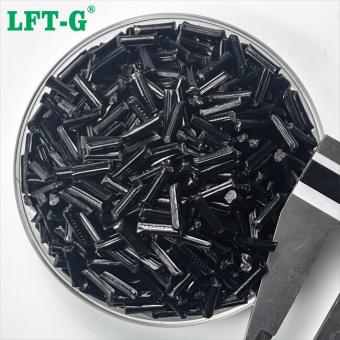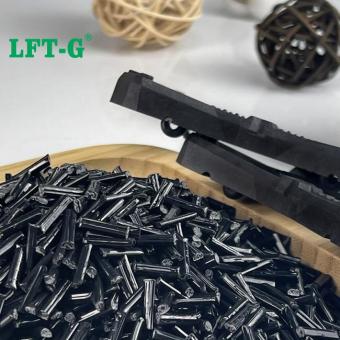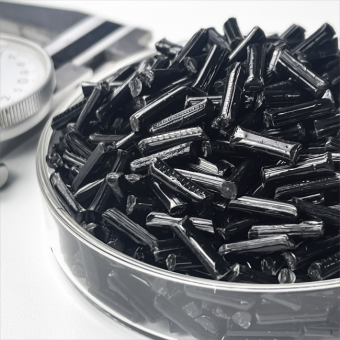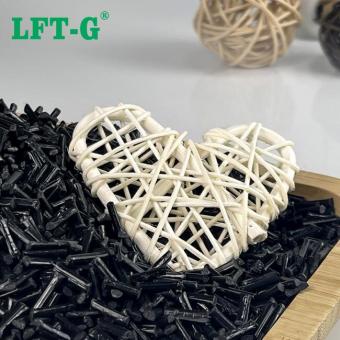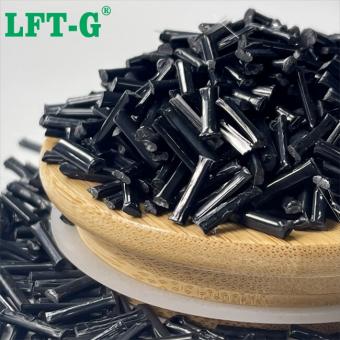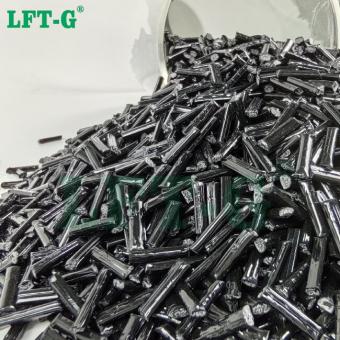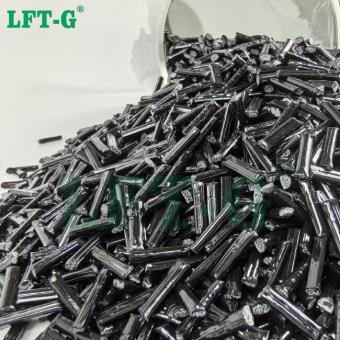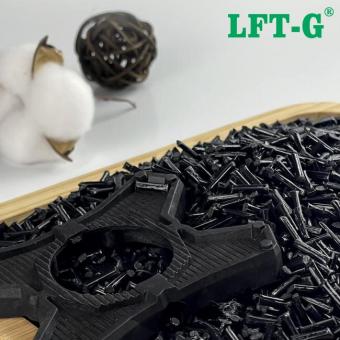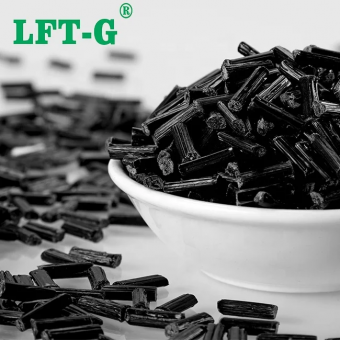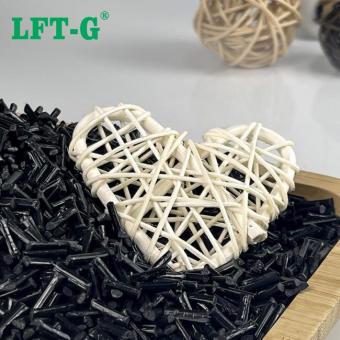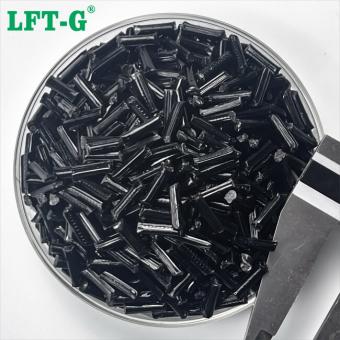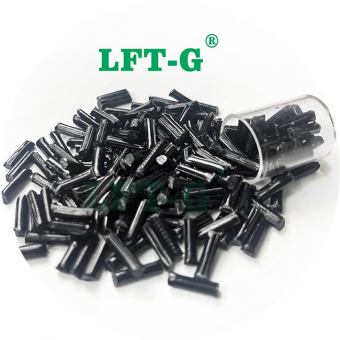The pp long carbon fiber copolymer has high chemical resistance and is one of the non-polar crystalline polymers.
-
PP CF Reinforced Polymer Injection Molding ProductsThe modified PP reinforced by carbon fiber has a series of advantages, such as light weight, high modulus, high specific strength, low coefficient of thermal expansion, high temperature resistance, heat shock resistance, corrosion resistance, good vibration absorption, etc., and can be applied to auto parts such as automobile sub-instrument assembly.
- reinforced composite materials
- carbon fiber composite materials
- fiber reinforced composite materials
- cfrp carbon fiber reinforced plastic
- carbon reinforced fiber
- fiber reinforced plastic
Tags :
-
PP Copolymer Carbon FiberThe modified polypropylene material reinforced by carbon fiber has a series of advantages, such as light weight, high modulus, high specific strength, low coefficient of thermal expansion, high temperature resistance, heat shock resistance, corrosion resistance, good vibration absorption, etc., and can be applied to auto parts such as automobile sub-instrument assembly.
- pp polymer
- fiber polymer
- fiber reinforced polymer
- fiber reinforcement polymer
- carbon fiber polymer
- fiber reinforced polymer composite
Tags :
-
Polypriopylene PP Carbon FiberPP long carbon fiber reinforced material offers exceptional strength and lightweight properties, making it ideal for high-performance applications. Its superior rigidity and impact resistance enhance product durability and structural integrity. Widely used in automotive, drones, and industrial components, it ensures excellent mechanical performance.
- PP CF30
- Polypropylene granules manufacturer
- PP copolymer pellets
- copolymer vs homopolymer pp
- pp carbon fiber compound
- Carbon Fiber Reinforced Materials
Tags :
-
Advanced Materials Polypropylene Resin Long Carbon Fiber filled PelletsPP long carbon fiber reinforced material offers exceptional strength and lightweight properties, making it ideal for high-performance applications. Its superior rigidity and impact resistance enhance product durability and structural integrity. Widely used in automotive, drones, and industrial components, it ensures excellent mechanical performance.view more
-
High Mechanical Properties PP Long Carbon Fiber Polymer PelletsPolypropylene, also known as PP or polypropene, is a polyolefin or saturated polymer. It is a low-density thermoplastic with good resistance to heat. Other characteristics of PP include: chemical resistance, elasticity, toughness, fatigue resistance, and electrical insulation capability.view more
-
Carbon Fiber Reinforced PP Resin Pellets Injection MoldingPolypropylene, also known as PP or polypropene, is a polyolefin or saturated polymer. It is a low-density thermoplastic with good resistance to heat. Other characteristics of PP include: chemical resistance, elasticity, toughness, fatigue resistance, and electrical insulation capability.
- carbon fibre vs glass fibre
- lightweight composite
- pp granules price per kg
- carbon fiber reinforced plastics
- is copolymer plastic
- 3d printed carbon fiber vs carbon fiber
Tags :
-
PP CF Thermoplastic Plastics Long Carbon Fiber Plastic CompoundsThe modified polypropylene material reinforced by carbon fiber has a series of advantages, such as light weight, high modulus, high specific strength, low coefficient of thermal expansion, high temperature resistance, heat shock resistance, corrosion resistance, good vibration absorption, etc., and can be applied to auto parts such as automobile sub-instrument assembly.
- aramid carbon fiber
- carbon fiber thermoplastic composite
- what is a homopolymer
- oem polypropylene fiber
- homopolymers and copolymers
- polymer vs copolymer
Tags :
-
LFT Copolymer Polypropylene Long Carbon Fiber filled CompositesThe modified polypropylene material reinforced by carbon fiber has a series of advantages, such as light weight, high modulus, high specific strength, low coefficient of thermal expansion, high temperature resistance, heat shock resistance, corrosion resistance, good vibration absorption, etc., and can be applied to auto parts such as automobile sub-instrument assembly.
- pp random copolymer
- polypropylene block copolymer
- PP cabon fiber
- carbon fiber crutches
- carbon fiber handlebars
Tags :
-
Long Carbon Fiber Copolymer Polypropylene Modified CompoundsCarbon fiber reinforced composite (CFRP) is composed of carbon fiber as a reinforcement material and resin as a matrix material, and early carbon fiber composite materials are mainly used in the military field. With the improvement of material properties, molding process and price cost, carbon fiber composite materials are more and more used in general industry and sports and leisure fields.
- pp 30 cf
- carbon fiber resistance
- difference between copolymer and homopolymer
- long-fiber thermoplastic composite solutions
- carbon thermoplastic
- automotive thermoplastic composites
Tags :
-
Polypropylene Carbon Fiber Modified with Excellent StrengthPP long carbon fiber reinforced composite is a high-performance lightweight material based on polypropylene matrix reinforced with long carbon fibers, offering excellent strength, stiffness, and fatigue resistance.
- pp cf
- polypropylene carbon fiber
- what are carbon fibers used for
- cfrp material
- carbon fibre melting temperature
- carbon fiber printing
Tags :
-
High Toughness Copo Polypropylene Carbon Fiber Filled Thermoplastic PelletsCombining the flexibility of Polypropylene and the properties of carbon fiber, PP-CF Compound material increases performance and brings reliability to the market.
- metal replacement solutions
- long fiber composites
- types of fibers in composite materials
- carbon reinforced plastic
- copolymer vs homopolymer polypropylene
Tags :
-
High Performance PP with Filler Carbon Fiber PelletsOur long carbon fiber reinforced copolymer polypropylene (PP-LCF) is an advanced thermoplastic composite designed for high-performance applications. This material combines the lightweight and chemical resistance of polypropylene with the exceptional strength and stiffness of long carbon fibers, delivering outstanding mechanical properties and dimensional stability.
- thermoplastic composites applications
- PP CF
- carbon fiber materials
- pp copo
- PP for car parts
- China pp producer
Tags :

 e-mail
e-mail English
English français
français Deutsch
Deutsch русский
русский italiano
italiano español
español português
português العربية
العربية 日本語
日本語 한국의
한국의 中文
中文












